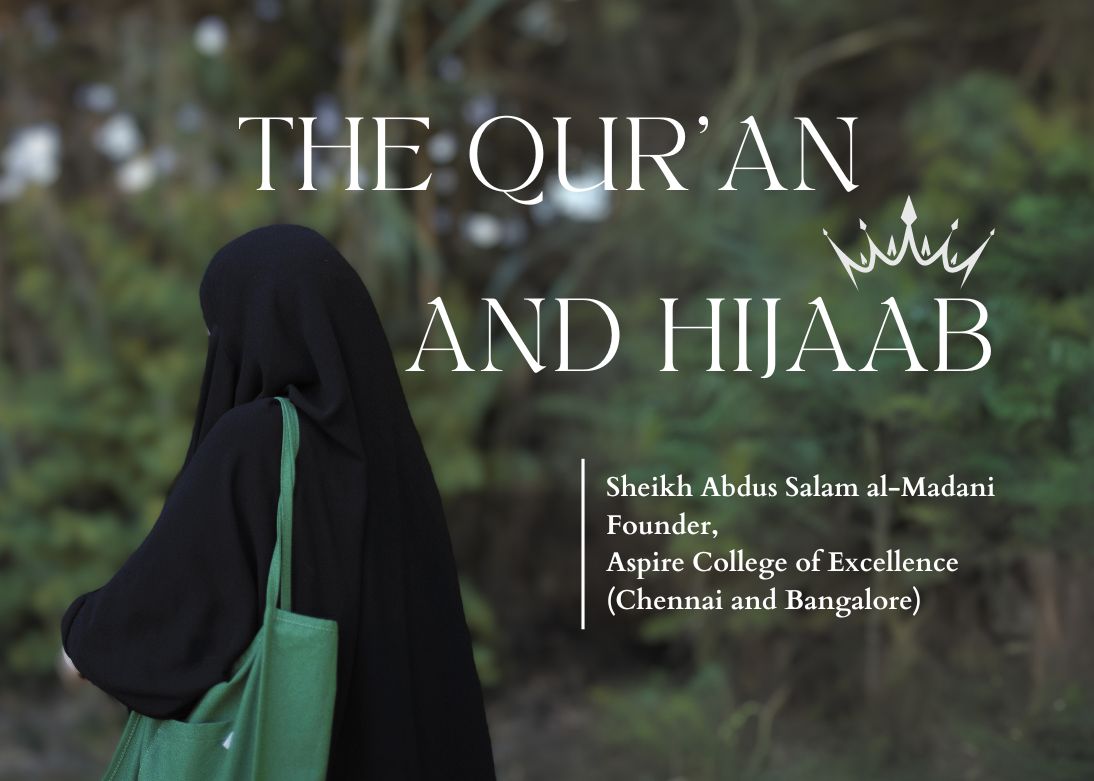
Islam does not condone free mixing as it causes unlimited social and psychological problems. Free mixing is the root cause of abuse of women, harassment, molestation, rape etc. In order to protect the chastity of a woman, the Qur'an not only laid emphasis on the veil but also set many regulations.
One commandment is to lower the gaze. Men and women are not allowed to look at each other with a lustful or emotional gaze because the gaze is the first step towards evil. One such instruction in this direction is that when women talk to non-mahram men, they should keep their voice natural and bland; and not express themselves in a mellifluous or seductive style which may convey a measure of desire and availability.
Your gait and comportment too can be willfully seductive or demurely modest. Sashaying in public with a swinging gait is another way in which a woman may be inviting trouble. That is why Allah Ta'ala stressed upon walking with modesty and humility. He also forbade the women from attracting attention towards themselves by wearing tinkling baubles(whether around the ankles or elsewhere), because even the sound of a woman's concealed adornments may divert a man's attention to her presence and hold it captive there.
After all these nuanced precautions, Allah ordered the woman to fully conceal her actual self. 'Adornment' or 'assets', whether natural or artificial, is bound to be attractive. Allah Ta'ala has mentioned many types of clothing to conceal these adornments. A woman has a home dress, which she wears at home in front of her children, brothers, nephews etc. It is called Dir’un (maxi) which covers from the shoulders to beneath the ankles. 'Qamees' is also mentioned which covers from the shoulders to below the knees, and 'Izaar' is also mentioned, which is from waist to feet. These are known as home dresses.
But when there is a need to go out, the Qur'an mentions 'Khimar' and 'Jilbab'. Khimar is a kind of expansive head covering, through which, women are to cover their hair, head and chest. The face is covered on three sides using this cloth. When there is a need to go out, women have been ordered to put on the Jilbab over the home dress. This Jilbab used to be quite a loose garment. Once the women said to the Messenger of Allah (peace and blessings of Allah be upon him) that some women do not have Jilbab to go to the Eid prayer, so he said: "The other sister should take her in her Jilbab." This hadith is in Sahih Bukhari.
Two things are known from this hadith: the Jilbab was worn while going out, and it was so loose that it was sufficient for another woman if needed. So the women, who go out with only a head covering; a shalwar kameez; or a shawl, in fact ignore the commandment of Jilbab. In order to follow the commandment of Jilbab, Muslim women since the time of companions have been wearing the 'Burqa', 'Abaya', etc when going out. The reason for this is to hide the home dress in its entirety when outdoors. At home, women can wear apparel according to their convenience and requirements, but when they go out, they should cover it completely, and this loose garment that covers completely is called Jilbab.
At the very beginning when the order of hijab was revealed, women used black-colored jilbab, which is still considered as the best colour for hijab. This is because the black color is opaque; it easily hides the garments and its color. The other colors are not as impenetrable as black. Also, another advantage of black is that it is a forbidding color. Other colours attract people towards them, but people get repulsed by black colour; that's why generally 'ghosts' are portrayed in black, so that people don't even think of approaching it.
Let's understand one more thing here that in the Qur'an it is ordered to pull the Jilbab down over the head while going out. The visage of a woman is the epitome of her beauty. It is for this reason that Allah Subhanahu wa ta'ala ordered the woman to conceal her face by pulling down her Jilbab over it. This is a very clear evidence (of concealing the face). That is why the Scholars have always advocated the veiling of the face, because it is clearly mentioned in the Qur'an.
Niqab is also mentioned in hadith. Niqab is meant to hide the face. Even if there is no Niqab, and the Jilbab is pulled down over the head, the face gets automatically hidden.
One should carefully study the verses and ahadith, then go through the commentary of the Companions and pious predecessors, then all the above-mentioned things will become very clear.
Those who read only the translation of the verses and the ahadith find these details difficult to comprehend.
May Allah bless us with faith, knowledge and good deeds. Aameen!
Sheikh Abdus Salaam Omari Madani,
Founder,
Aspire College of Excellence (Chennai and Bangalore)
Comments (0)
Categories
Recent posts


When does chimpanzee become more ...
7 Mar 2024.jpg)
Nothing is hidden from the life of ...
5 Mar 2024
Love is words or actions?
7 Feb 2024




